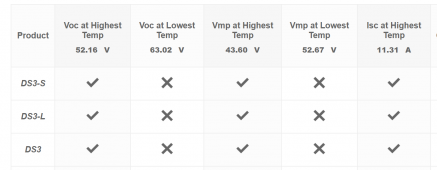Surprised to see there is no thread on these new Microinverters yet, so figured I’d start one: https://drive.google.com/file/d/1aY1RyvDp9Az-jay6xCTGtmUTaDDJ2IZv/preview
A dual-MPPT Microinverter with 880VA of output for only $200 has got to be the most competitive offering in today’s Microinverter market.
Interested if anyone has purchased these yet and what they think of the product…
A dual-MPPT Microinverter with 880VA of output for only $200 has got to be the most competitive offering in today’s Microinverter market.
Interested if anyone has purchased these yet and what they think of the product…





